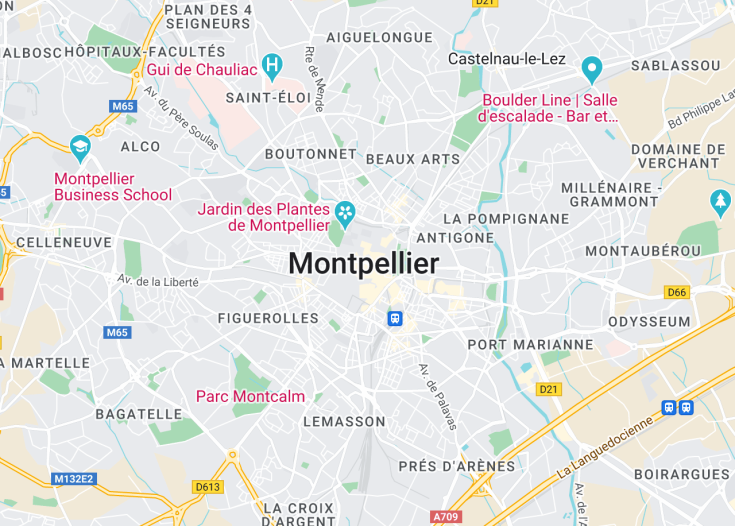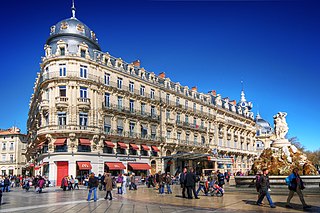Montpellier, the enchanting capital of the Hérault department in Southern France, seamlessly marries the historic with the contemporary. Renowned for its medieval streets, which today bustle with modern boutiques and cafes, Montpellier is a vibrant university city, infused with youthful energy and rich cultural life. The city is also famed for its wine regions nearby and the beautiful Mediterranean coastline, which make it a comprehensive destination for all types of travelers seeking culture, adventure, and relaxation.
To truly embrace the local culture, visit the quaint cafés in Montpellier’s historic Place de la Comédie and enjoy a cup of traditional French coffee while people-watching.
While in Montpellier, don’t miss the chance to explore the nearby vineyards. Many offer tours and tastings, providing a perfect glimpse into the region’s world-renowned wine production.
How to best experience Montpellier?
Tickets, tours, and activities for Montpellier are available at these providers:
Click on the logos below to easily compare prices.

Feeling lucky? Try the direct search:
GetYourGuide.com Viator.com Trip.com Expedia.com Tiqets.com Ctrip.com (中文)
Montpellier: The Vibrant Heart of Southern France
| Country | France |
| Time in Montpellier | GMT+1 |
| Language spoken | French |
| Population | 290,053 (source: Montpellier’s 2023 municipal data) |
| Currency | Euro (€, EUR) |
| Airports | Montpellier-Méditerranée Airport (MPL) (7 mi / 11 km) |
Montpellier, the dynamic capital of the Hérault departement in Southern France, epitomizes cultural vibrancy and historical richness. With its roots tracing back to the 8th century, Montpellier has blossomed into a prestigious educational and cultural center. The city is renowned for its medieval quarters, such as the hallowed Rue du Bras de Fer, which buzzes with youthful energy partly because of the University of Montpellier, one of the oldest in the world, established in 1160. In modern times, Montpellier continues to expand, with innovative urban projects that seamlessly blend with its historic sites, creating a visually stunning urban tapestry that pulls travelers from around the globe.
Where is Montpellier?
Montpellier is strategically located in southwestern France, about 10 kilometers (6 miles) inland from the coast of the Mediterranean Sea.
Distances:
| Route | Distance by car | Time by car |
|---|---|---|
| Paris to Montpellier | 746 km | Approximately 7 hours |
| Lyon to Montpellier | 303 km | Approximately 3 hours |
| Marseille to Montpellier | 170 km | Approximately 1.5 hours |
What is Montpellier famous for?
Montpellier is famous for its rich history, vibrant student life, and being a hotspot for medical studies. The city also boasts a number of distinguished festivals, including the annual Montpellier Dance Festival, attracting global talents.
History
Before 985 AD: Prehistoric and Ancient Roots
Montpellier’s geographic location in the south of France made it a prime area for settlement by various groups throughout prehistory and ancient times. Archaeological finds indicate that the area was inhabited by hunter-gatherers during the prehistoric period, gradually evolving into a hub of trade and commerce in the ancient era with Greek and later Roman influences making a mark.
985-1593: Establishment and Growth
The documented history of Montpellier begins in 985 when the village was first mentioned in a document as “Monspessulanus.” During the Middle Ages, Montpellier gained prominence due to its position on the trade routes between Spain and the rest of Europe. The city saw significant growth and development in the 12th century, having been granted a charter, which encouraged learning and the arts. The establishment of the University of Montpellier in 1220, one of the oldest in the world, further highlighted its importance as a cultural and educational center.
1593-1789: Economic and Social Developments
In the Early Modern Period, Montpellier continued to thrive as an economic hub. The introduction of new agricultural techniques and crops, such as the introduction of the mulberry tree for silkworm farming, drastically boosted the local economy. The city became one of the wealthiest in the region, distinguished by its grand mansions and vibrant cultural scene. However, it also faced challenges such as the religious conflicts during the French Wars of Religion, which affected the region deeply.
1789-Present: Modern Developments
The French Revolution and the ensuing centuries brought great changes to Montpellier. The city’s architecture was modernized, and it continued to expand. The 20th century was marked by further growth, particularly after World War II, when the city underwent substantial redevelopment and modernization, embracing its role as a center for medicine and science. Today, Montpellier is known for its vibrant student population, high-tech industries, and rich cultural heritage, continuing its evolution while maintaining its historical roots.
Visit Montpellier
What to see and do in Montpellier, France.
Montpellier offers a blend of historical and contemporary attractions that captivate visitors. The historic Place de la Comédie is a central hub, featuring the beautiful Opéra Comédie. The nearby Fabre Museum houses one of France’s richest collections of European art. For a taste of the city’s architectural heritage, the Saint Pierre Cathedral and the medieval Mikvé (Jewish ritual bath) are must-sees. The Montpellier Zoological Park and the Serre Amazonienne offer a glimpse into diverse ecosystems, ideal for families. For leisure and relaxation, head to the Jardin des plantes de Montpellier, France’s oldest botanical garden.
- Explore the medieval streets of the historic center
- Visit the Antigone district, showcasing neo-classical architecture by Ricardo Bofill
- Experience the lively atmosphere at the Marché du Lez, a vibrant market and social space
Annual Events in Montpellier
Montpellier hosts several annual events that reflect its dynamic cultural scene. The Montpellier Dance Festival in June and July is one of Europe’s premier dance festivals. The Comédie du Livre, held in May, is a significant event for book lovers, featuring numerous authors and booksellers. The Cinemed, Montpellier’s International Mediterranean Film Festival in October, showcases films from the Mediterranean basin.
Best time to visit Montpellier
The best time to visit Montpellier is during the late spring (May and June) and early autumn (September and October). During these months, the weather is pleasantly warm, and the city is less crowded compared to the peak summer tourist season.
Is Montpellier worth visiting?
Montpellier is unquestionably worth visiting for its rich blend of historical and modern attractions, vibrant cultural scene, and beautiful Mediterranean climate. Whether interested in history, art, or simply enjoying the lively southern French lifestyle, Montpellier offers a diverse range of activities and sights that cater to all preferences. Its educational institutions, festivals, and markets additionally provide a continuous influx of energy and innovation, making Montpellier a dynamic destination to explore.

